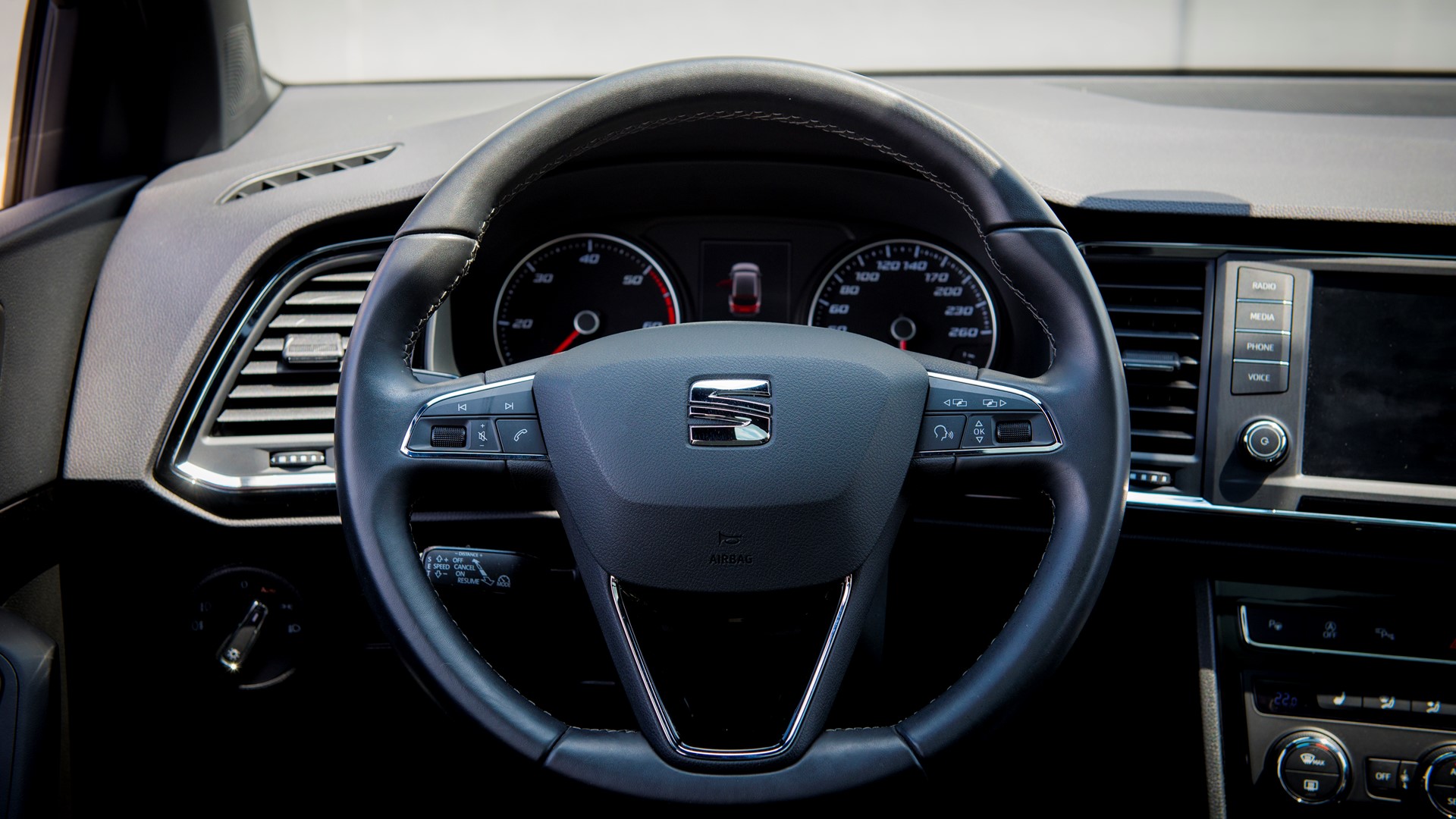Evolution of the steering wheel
- In the late 50s, the steering wheelwas a rigid, slender ring that only enabled the driver to manoeuvre
- Its evolution has led to added comfort, safety and ergonomics
- Today, your hands never have to leave the wheelto regulate driving speed, interiortemperature or select a route
Martorell, 07/11/2018.- The steering wheel has always been our guide on the road, and responsible for conveying a sense of freedom and control when we drive. Its form and function have evolved over history, going from a simple ring we had to turn while wearing gloves for better grip and to prevent blisters, to being a major ally that now parks for us and enables us to control driving speed, music selection or the telephone without ever taking our eyes off the road. We go over how steering wheels have changed over 70 years of history by looking at SEAT models:
-The 50s: In this decade, the steering wheel was a large, rigid ring made of synthetic resin that made driving a strength training exercise. "Luxury models like the SEAT 1400, inspired by American cars, feature steering wheel mounted details such as a copper logo or the main beam flash switch. Even the gear lever was located on the steering column" says lsidre Lopez, who is in charge of SEAT's Vintage Car collection.
-The 60s: The models purchased by the middle class, such as the SEAT 600, featured a steering Wheel that was reduced to its bare bones: "It was an element used only to turn the wheels, without any logo or controlbuttons, and only featured a horn to alert other drivers and pedestrians of our presence, as vehicles were still an uncommon sight", explains the expert.
-The 70s: Throughout the history of the steering wheel, it became gradually smaller and was made with new, padded, synthetic materials to increase driver comfort and safety. The SEAT 850 Spider was launched in the 70s, and sporty steering wheels became a glamorous statement piece. In those years they were beginning to use metal on the spokes and the classic round holes were added. lsidre Lopez says that "this modelbecame a sensation for its stylish, sporty design. Its wood trim gave it a touch of luxury and it featured two perforated spokes that gave it the look of a race car". Models such as the SEAT 124 became a success in the late 70s: "The horn was no longer in the middle, but at the side next to the two horizontal spokes, and was activated with the thumb", says lsidre.
-The 80s and 90s: With the arrival of power steering, the diameter of the steering wheel got smaller, and at the same time giving drivers added comfort and safety. "On the early versions of the SEAT lbiza, this part is more substantialand is made of a materialsimilar to rubber, making it more ergonomic and easier to modulate", says the vintage car curator. New functions were added in subsequent decades: "The following generation lbiza in the 90s was then equipped with an airbag, and on the third one, the driver could select radio channels and control the volume from the steering wheel.'
-Today: Parking and lane control assistacne and all information at hand. These are some features available now to drivers: "Models such as SEAT Ateca, the Arona or the Ibiza enables us to control the interior temprature, select music, Chose a route, Select the driving speed or range and even make a telephone call from the steering wheel. All the information is displayed on the instrumental panel to prevent distractions", he points out.
-The Steering wheels of the future: Drivers will have increasingly more control over the vehicle without takinf their hand off the steering wheel. However, "With time and progress being made on the autonomous car, they may even disappear altogether", concludes Isidre.

